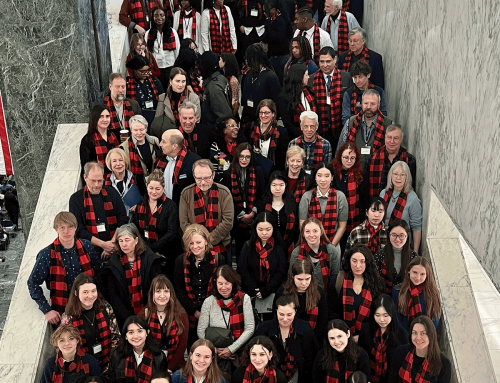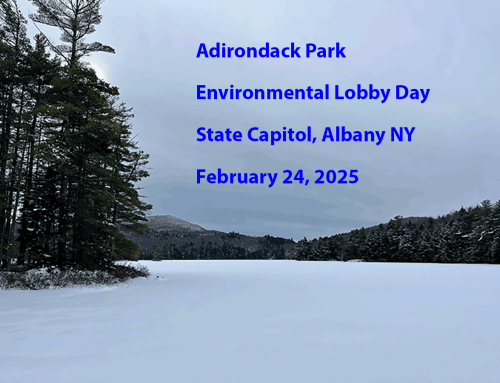At the Adirondack Park Agency (APA) meeting on Friday March 11, 2016, the APA acted to amend the Adirondack Park State Land Master Plan (APSLMP) to make a series of changes, the most controversial being changes to the Essex Chain Lakes and Pine Lake Primitive areas to allow public bicycle use and use of motor vehicles for management and maintenance by the Department of Environmental Conservation (DEC). The APSLMP sets management policy for the 2.6-million acre Adirondack Forest Preserve. Since enactment in 1972, the APSLMP has managed Forest Preserve lands classified as Primitive Areas as essentially Wilderness areas. Many Primitive areas have ultimately been upgraded and reclassified to Wilderness. Bicycles and motorized use, even for state agencies, except in times of emergencies, are prohibited in Wilderness areas.
The APA is led by an 11-member Board of Commissioners. Richard Booth, an environmental law professor at Cornell University, holds one of three outside-the-Park seats on the APA Board. He was appointed by Governor Spitzer in 2007 and reappointed by Governor Cuomo in 2012. Booth dissented from the APA’s decision to change Primitive areas and at the end of the APA’s deliberations he delivered a statement on the serious flaws in Forest Preserve planning and management at state agencies under Governor Andrew Cuomo.
Click here to watch the 12-minute presentation. Choose the Friday March 11, 2016 video and start at 1:37:25 to hear the whole statement.
Here is Dick Booth’s statement.
“Madam Chair I ask for permission to make some comments.
I’ve argued very long and hard with myself regarding making these comments today. Someone asked this morning if I slept well last night and the answer was no. I make them with great reluctance because I’ve decided they need to be made and I think I’m the person who’s probably in the best position to make them.
These comments are very likely to generate a good deal of criticism. They may generate a good deal of anger. They may generate strong denials. They may generate other ramifications. And I accept those possibilities.
I’m solely responsible for these comments today. I prepared them by myself and particularly no member of the Agency has had anything to do with these comments. No member of the staff has had anything to do with these comments. If there is criticism it should be directed to me.
I highly respect the office of the Governor of this state. I am a longtime observer of state government. I appreciate the awesome responsibilities that sit on the shoulders of the Governor. I respect this Governor’s many accomplishments. I’m very appreciative that Governor Cuomo reappointed me to this Agency so I could continue to serve the people of the State of New York.
I have said publicly that the State Land Master Plan amendment process regarding major amendments is badly broken and that’s what I intend to address here in these next few minutes.
All of you know that the Park is a great treasure, one of the great natural resource areas of the United States and, indeed, a natural resource treasure with worldwide significance.
The Adirondack Park established the Adirondack Park Agency in order the focus, and I quote, ‘the responsibility for developing long-range park policy in the forum or body that reflects statewide concerns.’ The Agency is that forum. The membership of the Agency represents multiple constituencies, and indeed, something as complex as the Adirondack Park would require. It represents local interests. There are five members who are required by law to be fulltime residents of the Park. There are three members of the Agency who must live outside the Park and I am one of those. And there are three state officials who report directly to the Governor.
The idea of creating the Agency was that there are different priorities, there are different ideas, about the Adirondacks, and the future of the Adirondacks, and that the Agency would be the place where there would be an honest interchange, and a full interchange, of ideas and then decisions would be made. It was never contemplated that anyone would necessarily be happy with all the decisions or that any constituency would necessarily be happy with any particular decision. But there was a recognition that was important that there be a full and honest deliberation of what matters came before the Agency.
The State of New York has many interests in the Adirondack Park. Those interests at their highest levels involve, certainly, the safety of people in the state, but beyond that, in terms of the land area of the Adirondacks, the highest state interests are the state lands of the Park.
The State Land Master Plan was created to further those interests. And again it’s a mixture of interests, it’s not just statewide interests, but statewide-local interests, state government interest, and local government interests, etcetera.
The core of the State Land Master Plan is aimed at protecting Wilderness values. All of these lands, or virtually all of these lands, are protected by the forever wild clause of the State Constitution. There was no reason to create a State Land Master Plan unless at its central purpose was to provide much more protection than was afforded in a general sense under Article XIV.
The basic idea in protecting Wilderness was that in today’s life with modern conveniences that in Wilderness areas and near Wilderness areas people put aside those conveniences and move under their own power, move without motors, move without mechanized devices. The Master Plan comes down strongly in favor of allowing natural forces to undertake and pursue their own ends and for human beings to move in certain areas in traditional ways and using their own power.
Amendments to the State Land Master Plan are contemplated, and are appropriate, and the plan provides for amendments. The way the process is supposed to work is that there should be a full, honest deliberation by the multi-constituency Adirondack Park Agency, which then makes recommendations to the Governor. The Governor is authorized, and it’s entirely appropriate, to approve either the Agency’s recommendations or to disapprove those recommendations.
But this process which I just described is not what has happened over many months regarding the Essex Chain Lakes Complex, and the UMP [Unit Management Plan] that was adopted, or regarding these amendments to the State Land Master Plan. I’m not suggesting a different result might have occurred. I am saying that the process has not been a full open discussion by the Park Agency.
For many months, the Governor and the Governor’s staff have forced the Agency toward the result reached today. They have done so by rigidly controlling what analysis state agency staff was allowed to prepare and present to the Agency. They have rigidly controlled what materials Agency staff may prepare and present to the Agency. We have not had a full and open discussion on what in fact were all the issues reflecting the action that we have taken today.
That didn’t happen regarding DEC’s very flawed, in my opinion, UMP regarding the Essex Chain Complex or the EIS that it prepared. That has not happened regarding these amendments to the State Land Master Plan and the Supplemental EIS [Supplemental Environmental Impact Statement].
For example, for months it has been clear to members of this Agency, to a number of members, not all members, that the best way to accommodate public biking in the Essex Chain and Pine Lake Primitive Areas without doing violence to the Master Plan was to create a new land classification. A classification that would not allow motorized recreation but would permit public biking over miles of trails. Many many months ago I said I was willing to live with that possibility or with that conclusion. That would not do violence to the Master Plan because we would have a new classification and it wouldn’t pretend to be Wilderness and it wouldn’t pretend to be Primitive.
A number of members, including myself, requested an examination of those possibilities, but we have neither the EIS nor the materials presented to the Agency for discussion have ever formed out, fleshed out, dealt with in detail that possibility because the Governor and the Governor’s staff had not permitted the staff to undertake that work and present it to the Agency for its deliberations. This is not what the Agency Act envisioned when setting up the Park Agency. I’m not suggesting for a moment that a different result necessarily would have followed from the kind of discussion that I think the Park Agency Act demands.
As a result of what happened three very negative results have occurred and will continue to occur.
One is this action does seriously weaken the Master Plan’s protection of Wilderness because it mightily, significantly undermines the concept of Primitive Areas, which is one of the basic building blocks of protecting Wilderness in the Master Plan.
Two, this discussion has seriously weakened the statutory rule of the Park Agency as a forum in which there should be a full and open discussion of the issues facing the state regarding the management of state lands.
Thirdly, and perhaps in the long run most seriously, this is a precedent that suggests the possibility that this kind of rigidly controlled discussion may become the model for the future and that should not be the case. This is not what the people of the State of New York understand the Park Agency is supposed to be doing.
Until now, today, no Governor in this state has chosen to force the Park Agency to weaken the Master Plan. Governor Cuomo and his staff have chosen to do so and the people of the State of New York should understand that this is a significant weakening of the Master Plan. And that what has been done today can be done over and over again regarding any of the areas of the Master Plan not just Primitive areas.
The State Land Master Plan, at the bottom line, was adopted to make the state government honest about the way it’s going to manage the state lands and if it’s going to change those rules it needs to go through an open and complete public discussion of those possibilities. The State Land Master Plan amendment process therefore regarding major amendments, not the everyday normal amendments that we do each year, the major amendments, has to be repaired. Governor Cuomo has to lead that effort to repair it and he has a responsibility to do so.
I present these comments respectfully and I present them with as much force as I possibly can. Thank you.”





